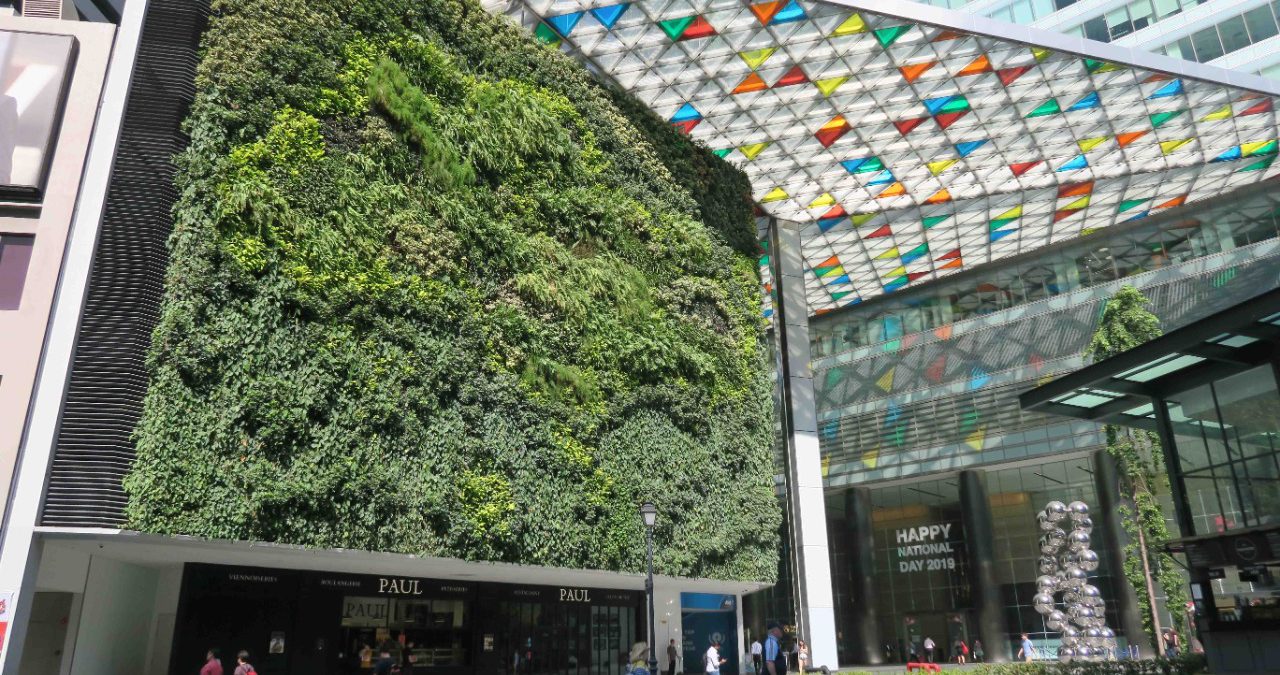
Keep up with our latest news and projects!

Over the years, the urban landscape has morphed into a unique topography where everyone’s perception of ‘eye level’ varies. As people traverse the city, someone working on the 34th floor would have a different ‘eye level’ from someone else sitting at a bus stop. Singapore’s strategy for greening up its built infrastructure constitutes this very idea of multi-level viewing. Skyrise greenery (a term coined in Singapore) refers to both rooftop and vertical greenery. It contributes towards the creation of a seamless continuous green layer weaving through our urbanscape — from our streetscapes, parks and nature reserves onto our high-rise structures. At the helm of this transformation is the National Parks Board (NParks) which looks at greenery holistically as part of their ‘City in a Garden’ vision.
Faced with the realities of limited land, a growing population and a premium for green spaces, Singapore has to be innovative in finding urban solutions to improve liveability. Driven by Singapore’s biophilic ‘City in a Garden’ vision, NParks has been continually striving to create integrated and pervasive green spaces across our island. Today, skyrise greenery has emerged as one of Singapore’s most viable, effective and innovative urban strategies.
Ten years since the inception of the Skyrise Greenery Initiative in 2009, Singapore has recorded more than 120 hectares of rooftop greenery. This is a remarkable achievement that has placed Singapore as a global trendsetter in this arena.
The Sustainable Singapore Blueprint (SSB) target currently envisions 200 hectares of rooftop greenery by 2030. Supported by a concerted whole-of-government approach and a comprehensive range of policies and initiatives, Singapore’s skyrise greenery is poised to break norms and push frontiers of greenery provision, creating a truly liveable city.
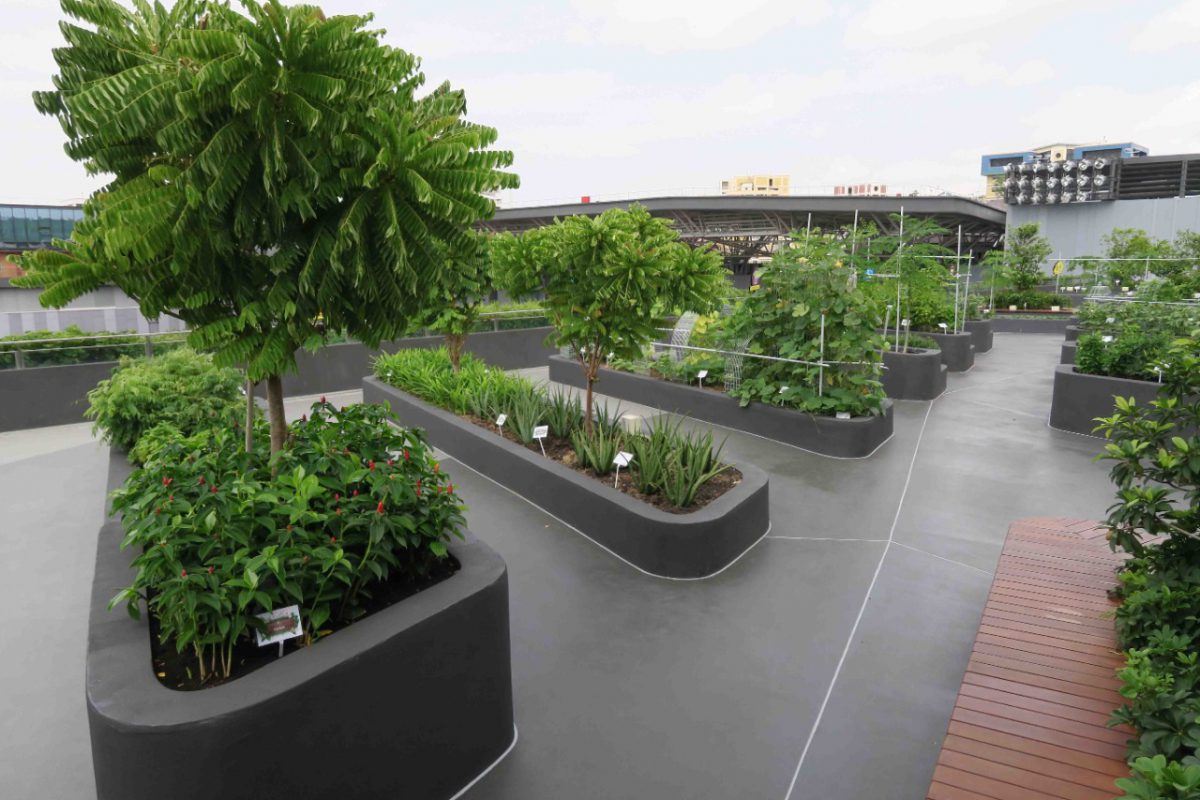 Our Tampines Hub
Our Tampines Hub
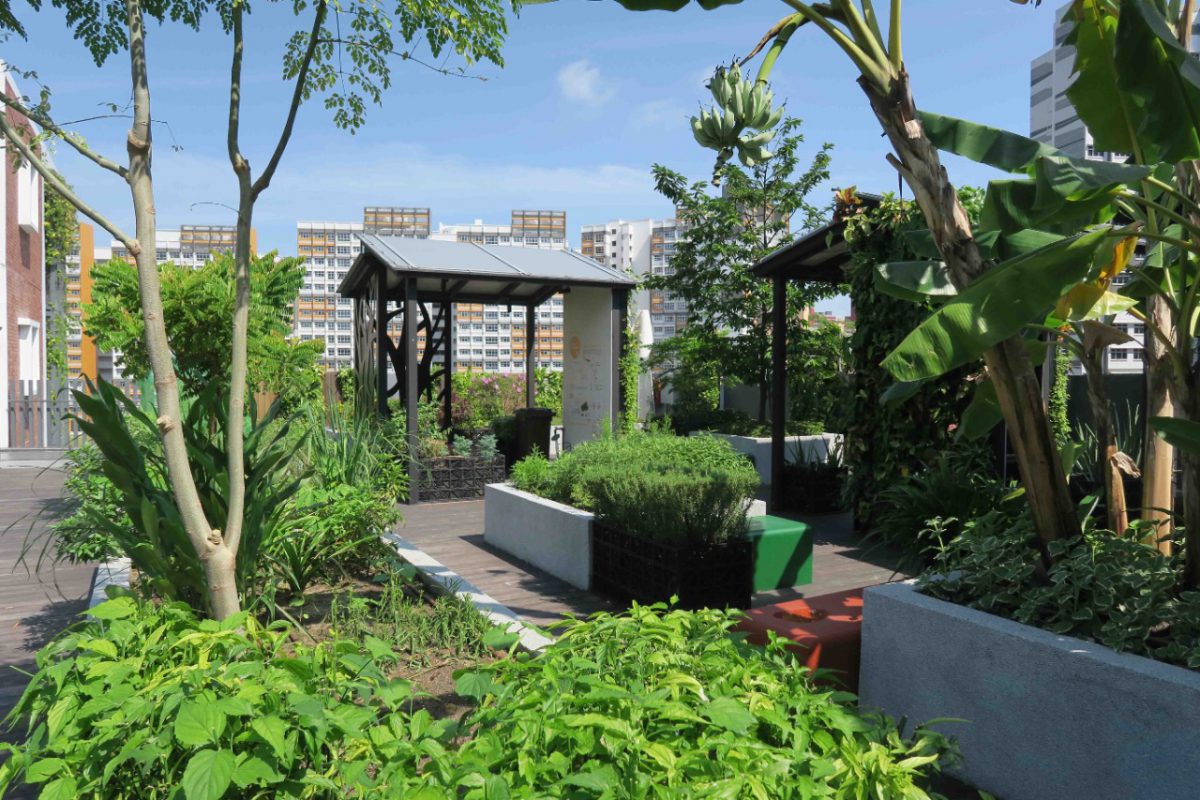 Dulwich
Dulwich
The programme’s success can be attributed to a strong level of support from various government agencies. This effort involves providing incentives and implementing policies to stimulate both the landscape industry and the local community. Understanding how businesses and communities work is essential when developing spaces that address their needs. Leading this greening effort since 2009 is NParks, an organisation that seeks to grow skyrise greenery in not only quantity but also quality. Their initiatives include:
1. The Skyrise Greenery Incentive Scheme (SGIS)
While there are other policies in place that target greenery on new building developments, SGIS provides financial incentives for building owners who wish to install rooftop and vertical greenery on their existing buildings.
Since its inception in 2009, this scheme has successfully supported more than 180 building owners in their greening efforts. It has helped community facilities, businesses and developers to recognise both monetary and non-tangible values of greenery within their private residential developments, community facilities and commercial spaces. Schools and healthcare facilities have also started to embrace the educational and therapeutic value of greenery on their elevated spaces. This scheme helps each project to achieve their own objectives while contributing towards Singapore’s overall skyrise greenery footprint.
2. Edible gardens on rooftops:
Edible gardening is a rapidly growing trend amongst city dwellers worldwide. Factors fuelling this trend include the increasing preference for fresh and organically grown food, the revival of ‘farm to table’ food concepts and rising food security concerns.
Likewise, Singapore also witnessed a burgeoning interest in edible gardening and urban farming. Making use of a consolidated strategy, NParks decided to champion and nurture this phenomenon into a viable edible gardening movement for all Singaporeans.
The NParks Community-in-bloom (CIB) team works together with members of the public islandwide to form community groups that help to develop under-utilised rooftop spaces into community gardens for social bonding and to grow edible plants. As most of our population live in high-rise apartments with limited outdoor space, these rooftop gardens have become key social nodes or ‘vertical kampongs’ providing residents with vital communal experiences.
3. Therapeutic Gardens:
Studies have shown that city-dwellers face a higher risk of suffering from mental health ailments compared to those who live in rural areas. This is exacerbated when it comes to more vulnerable groups such as the elderly. Singapore currently has a senior population of 487,000 with an estimated 1 in 10 with dementia. Both numbers are expected to just about double by the year 2030. The social and economic pressures of caregiving and the strain on the healthcare sector is expected to rise significantly.
A research study conducted together with the National University Health System (NUHS) showed that participants with greater access to nature and nature-related activities experienced higher social connectedness, improved immune systems and a lower risk of depression. As part of a multi-prong approach to deal with this significant national issue, NParks embarked on various initiatives to develop green spaces catered for an ageing population. NParks Therapeutic Gardens and Horticulture Movement is the first programme in South-East Asia which combines evidence-based design, research, an integrated network of gardens across the island, as well as comprehensive therapeutic horticulture programming customised for seniors. The movement optimises existing public green spaces including rooftop spaces as healing sanctuaries that maximise the restorative benefits of nature and encourage positive people-nature interactions to provide highly tangible social and health benefits for the community.
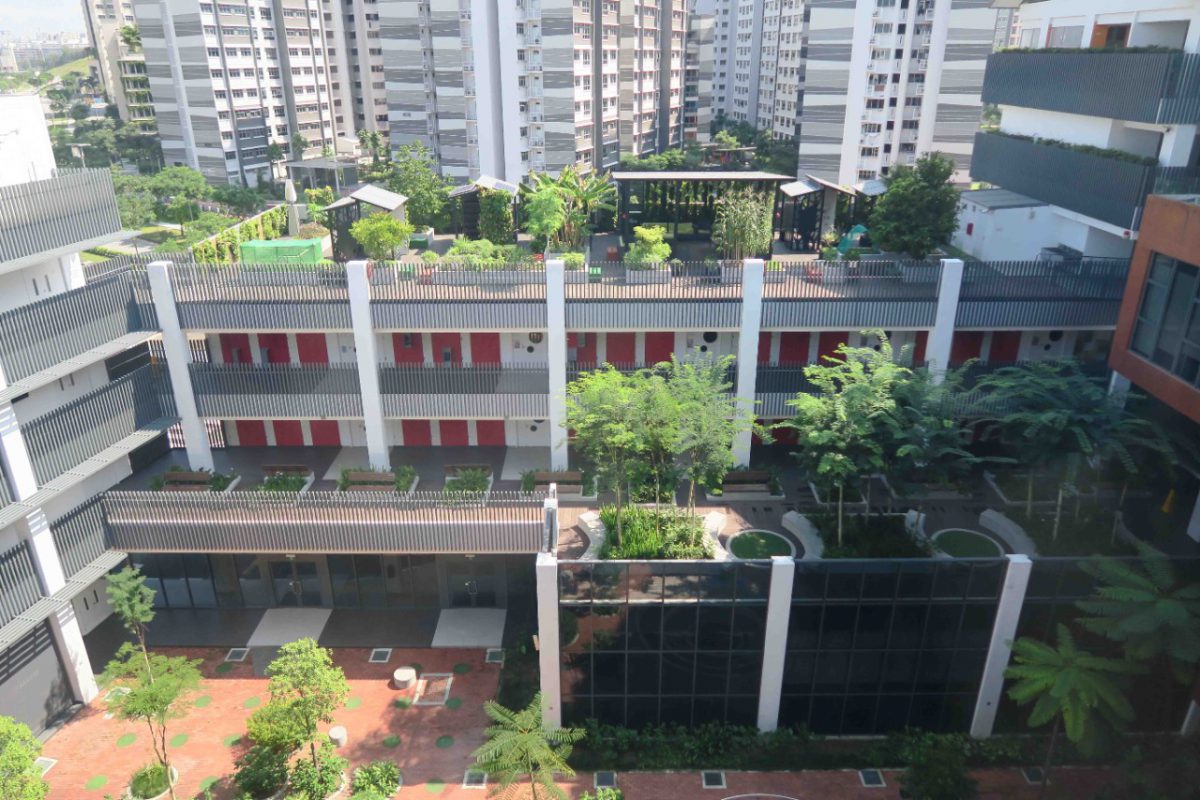 Dulwich
Dulwich
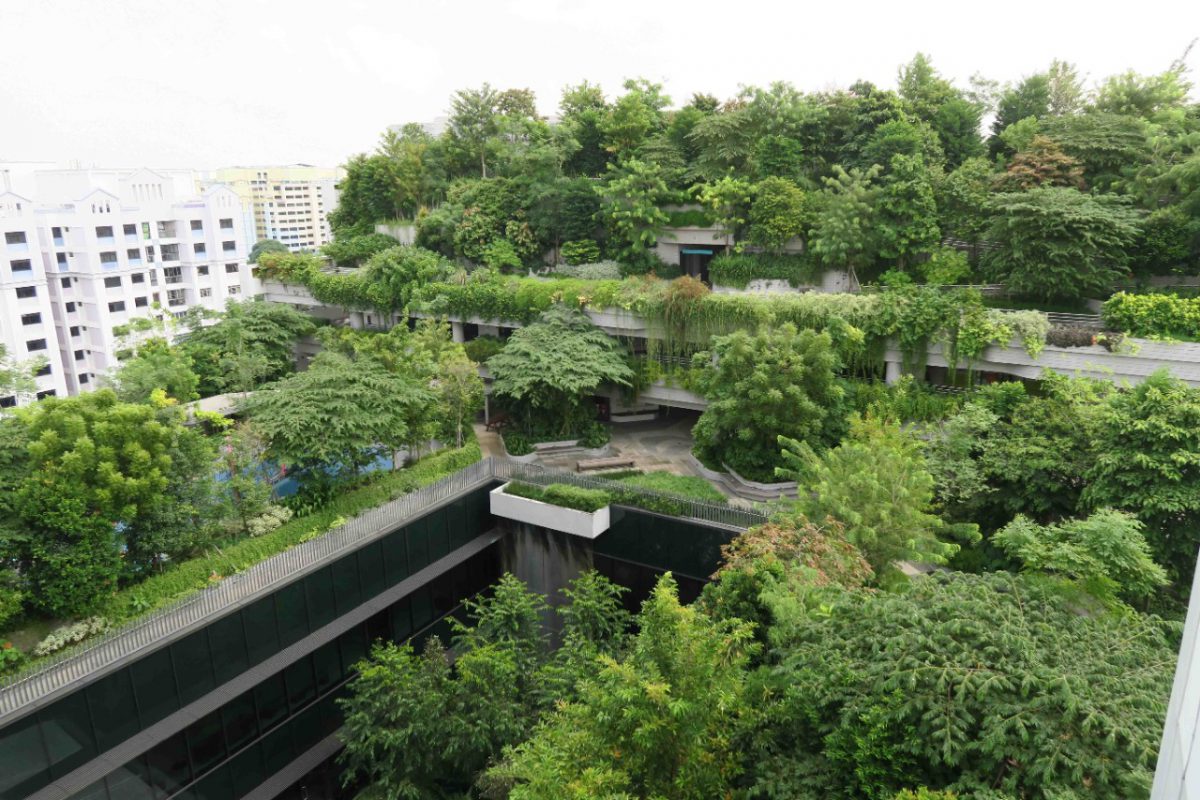 Kampung Admiralty
Kampung Admiralty
Skyrise greening in Singapore will continue to evolve with the changes in our population’s demographics and their needs. For us, every rooftop space represents an opportunity to develop a meaningful communal bonding place, a flourishing urban farm, a stress-relieving therapeutic garden, an educational space to connect with nature and even more simply, a chance to promote biodiversity within our city.